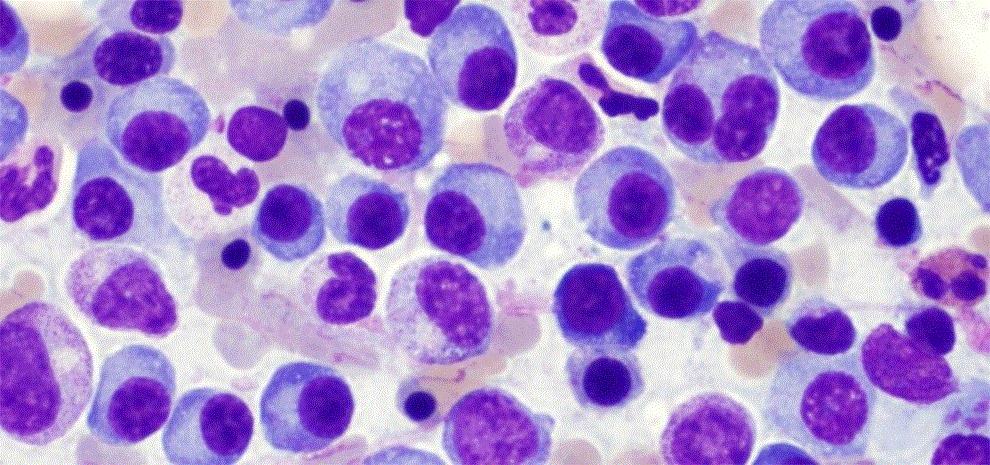Myeloma Survival Rates: Latest Breakthroughs

The landscape of multiple myeloma, a type of blood cancer characterized by the proliferation of malignant plasma cells in the bone marrow, has undergone significant transformations over the past few decades. Advances in medical science, particularly in the realms of genomics, immunotherapy, and targeted therapy, have led to the development of novel treatment strategies that have substantially improved patient outcomes. This article delves into the latest breakthroughs in multiple myeloma treatment, focusing on their impact on survival rates and the quality of life for patients.
Understanding Multiple Myeloma
Multiple myeloma is a complex disease with a wide range of clinical presentations, from asymptomatic, smoldering forms to aggressive, symptomatic disease requiring immediate intervention. The disease is characterized by the accumulation of malignant plasma cells in the bone marrow, leading to anemia, bone lesions, hypercalcemia, and renal impairment. Traditional treatment approaches, including chemotherapy, autologous stem cell transplantation, and supportive care, have been the cornerstone of management. However, the emergence of novel agents and technologies has shifted the paradigm towards more personalized and effective treatments.
Latest Breakthroughs in Treatment
Immunotherapies: The advent of immunotherapies, such as monoclonal antibodies (e.g., daratumumab, elotuzumab) and checkpoint inhibitors, has marked a significant milestone in the treatment of multiple myeloma. These agents harness the body’s immune system to recognize and eliminate cancer cells, offering new avenues for patients with relapsed or refractory disease.
Proteasome Inhibitors and Immunomodulatory Drugs: The combination of proteasome inhibitors (e.g., bortezomib, carfilzomib) with immunomodulatory drugs (e.g., lenalidomide, pomalidomide) has become a standard approach in both the frontline and relapse settings. These combinations have demonstrated superior efficacy compared to traditional chemotherapy, improving response rates, progression-free survival, and overall survival.
CAR-T Cell Therapy: Chimeric antigen receptor T-cell (CAR-T) therapy, which involves genetically modifying a patient’s T cells to target specific antigens on myeloma cells, has shown remarkable Promise in clinical trials. This innovative approach has achieved durable responses in patients with heavily pretreated disease, offering a beacon of hope for those with limited treatment options.
Genomic Profiling and Precision Medicine: The integration of genomic profiling into clinical practice allows for the identification of high-risk cytogenetic features and molecular subtypes, enabling a more tailored approach to treatment. Precision medicine strategies, including the use of targeted therapies against specific molecular abnormalities, are being explored to further personalize treatment and improve outcomes.
Impact on Survival Rates
The cumulative effect of these advances has been a progressive improvement in survival rates for patients with multiple myeloma. Over the past two decades, the median overall survival has more than doubled, with some studies suggesting that patients diagnosed today can expect to live 10 years or more after diagnosis. This improvement is particularly pronounced in younger patients and those with standard-risk disease, where median survival now approaches 15 years or more.
Quality of Life and Future Directions
While survival has improved significantly, the quality of life for patients with multiple myeloma remains a critical concern. Efforts to minimize treatment-related toxicities, manage symptoms effectively, and maintain functional status are ongoing. Future research directions include the development of more effective and less toxic therapies, the integration of artificial intelligence and machine learning into clinical decision-making, and a deeper understanding of the biology of myeloma to uncover new therapeutic targets.
Conclusion
The journey towards improved survival rates and quality of life for patients with multiple myeloma is a testament to the power of collaborative research and the resilience of the human spirit. As we continue to unravel the complexities of this disease and harness the potential of emerging technologies, there is every reason to believe that the future will hold even more promise for those affected by multiple myeloma.
What are the latest treatment options for multiple myeloma?
+The latest treatment options for multiple myeloma include immunotherapies, such as CAR-T cell therapy and monoclonal antibodies, proteasome inhibitors, and immunomodulatory drugs. Additionally, precision medicine approaches, including targeted therapies based on genomic profiling, are being explored.
How have survival rates for multiple myeloma changed over time?
+Survival rates for multiple myeloma have significantly improved over the past two decades, with median overall survival more than doubling. Current estimates suggest that many patients can expect to live 10 years or more after diagnosis, with younger patients and those with standard-risk disease potentially living 15 years or more.
What does the future hold for multiple myeloma treatment?
+The future of multiple myeloma treatment is promising, with ongoing research into more effective and less toxic therapies, the integration of artificial intelligence and machine learning, and a deeper understanding of myeloma biology to uncover new therapeutic targets. These advancements are expected to further improve survival rates and quality of life for patients.



